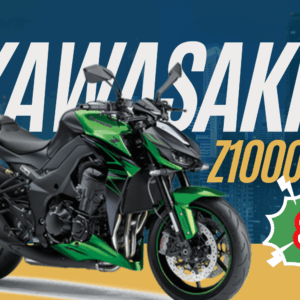The roar of the engine, the wind in your face, the open road stretching ahead – riding a motorbike is an unparalleled feeling of freedom. But with that freedom comes a significant responsibility. Motorbike riding demands a unique blend of skill, focus, and continuous learning. Whether you’re just starting out or have years of experience, refining your riding techniques is crucial for safety, control, and ultimately, a more enjoyable journey.
Let’s dive into the essential and advanced skills that will help you master the road.
Building the Foundation: Essential Basic Skills
Before you can carve corners like a pro, you need to firmly grasp the fundamentals. These are best practiced in a safe, controlled environment, like an empty parking lot or a dedicated training course.
-
Know Your Controls Inside Out:
- Clutch (Left Lever): This disconnects the engine from the transmission. Learning its “friction zone” – the sweet spot where power begins to engage – is key for smooth starts and low-speed maneuvers without stalling.
- Throttle (Right Handlebar): This controls your speed. Smooth, precise inputs are vital. Avoid jerky movements, especially at lower speeds or in corners.
- Front Brake (Right Lever): Your primary stopping power. It accounts for 70-90% of your total braking force due to weight transfer to the front wheel during deceleration. Learn to apply it progressively.
- Rear Brake (Right Foot Pedal): Used for secondary stopping power and to help stabilize the bike, particularly at low speeds or when coming to a stop.
- Gear Shifter (Left Foot Lever): Used to select gears. Practice upshifting (higher gears for more speed) and downshifting (lower gears for acceleration or engine braking).
-
Smooth Starts and Controlled Stops:
- Moving Off: Coordinate a gentle clutch release with smooth throttle application. The goal is to move forward without lurching or stalling.
- Braking: Master using both front and rear brakes simultaneously and progressively. Avoid grabbing the front brake suddenly, especially at speed, which can cause a lock-up. Practice straight, balanced stops.
-
The Art of Slow-Speed Balance:
- Motorcycles are least stable at slow speeds. Practice tight turns, U-turns, and weaving through imaginary cones. This builds crucial coordination between the clutch, throttle, and brakes.
- Look Where You Want To Go: This golden rule is paramount. Your bike naturally follows your gaze. If you’re turning, look through the turn. If you’re avoiding an obstacle, look at your escape path, not the obstacle itself.
-
Countersteering: The Magic of Turning:
- At speeds above 10-15 mph (15-25 km/h), motorcycles are steered by countersteering. To turn left, you push the left handlebar forward (or push down on the left grip). This counter-intuitive action causes the bike to lean into the desired turn, initiating the maneuver. It’s a critical skill for confident and precise cornering.
Elevating Your Ride: Advanced Riding Techniques
Once the basics feel second nature, these techniques will enhance your control, safety, and overall enjoyment on the road.
-
Mastering Advanced Braking:
- Emergency Braking: Practice hard, simultaneous application of both brakes to stop in the shortest possible distance without losing control. Knowing your bike’s limits (and whether it has ABS) is vital.
- Trail Braking: A more advanced technique where you apply light brake pressure (usually front brake) as you lean into a corner, gradually releasing it as you hit the apex and begin to accelerate out. This helps control speed, optimize grip, and fine-tune your line.
- Braking in Curves: If you must brake while already in a turn, do so very gently and gradually. Braking hard while leaned over can cause the bike to want to “stand up,” making the turn wider.
-
Precision Cornering:
- Line Selection: Choose the optimal path through a corner (often outside-inside-outside) to maximize visibility, minimize lean angle, and carry smooth momentum.
- Body Positioning: Shift your body weight to influence the bike’s lean angle and improve stability. For example, in sport riding, hanging off the bike reduces the bike’s required lean angle.
- Throttle Control in Corners: Before the corner, roll off the throttle. Maintain a steady, slight throttle (“maintenance throttle”) through the apex to stabilize the bike. Gradually roll on the throttle as you exit the corner to stand the bike up and accelerate.
-
Defensive Riding: Your Best Defense:
- Assume You’re Invisible: Always ride as if other drivers don’t see you. Wear bright gear, use your high beam during the day (where legal), and position yourself in traffic to be as visible as possible.
- Maintain Safe Following Distance: Give yourself ample space from the vehicle in front (at least a 2-second rule, more in adverse conditions) for reaction time.
- Scan Ahead: Constantly look beyond the immediate vehicle in front of you. Scan for potential hazards, traffic changes, road conditions, and escape routes far down the road.
- Anticipate Hazards: Expect the unexpected. Be prepared for cars pulling out, sudden lane changes, or obstacles in the road.
- Always Have an Escape Route: Be aware of open spaces or directions you can steer to avoid a sudden danger.
-
The Power of Proper Posture:
- Relaxed Grip: Avoid gripping the handlebars too tightly. Keep your arms relaxed with a slight bend in the elbows. This allows the bike to move naturally and improves your steering input.
- Strong Core & Legs: Use your core muscles and grip the tank with your knees to support your upper body. This takes weight off your hands, improving throttle and brake control.
- Head Up, Eyes Forward: Your head and eyes should always lead the bike, looking where you want to go.
The Journey of Continuous Improvement
Riding skills aren’t static; they evolve with practice and experience.
- Take a Motorcycle Safety Course: This is the single best investment you can make. Courses like the Motorcycle Safety Foundation (MSF) Basic RiderCourse (BRC) and advanced classes teach critical techniques in a safe, controlled environment.
- Practice Regularly: Dedicate time to practicing specific maneuvers in a safe area. Repetition builds muscle memory and confidence.
- Know Your Bike: Understand its unique handling characteristics, braking systems (like ABS), and power delivery.
- Ride Within Your Limits: Never push beyond your current skill level or comfort zone, especially in unfamiliar conditions. Gradually increase your pace and complexity as you gain confidence.
- Stay Hydrated and Rested: Fatigue and dehydration significantly impair judgment and reaction time.
- Always Gear Up: A helmet, gloves, jacket, long pants, and sturdy boots are non-negotiable for protection.
By consistently working on these skills, you’ll not only become a much safer and more confident rider but also unlock the true joy and freedom that motorbiking offers.
What’s one skill you’re currently working to improve on your motorbike? Share your tips in the comments!


